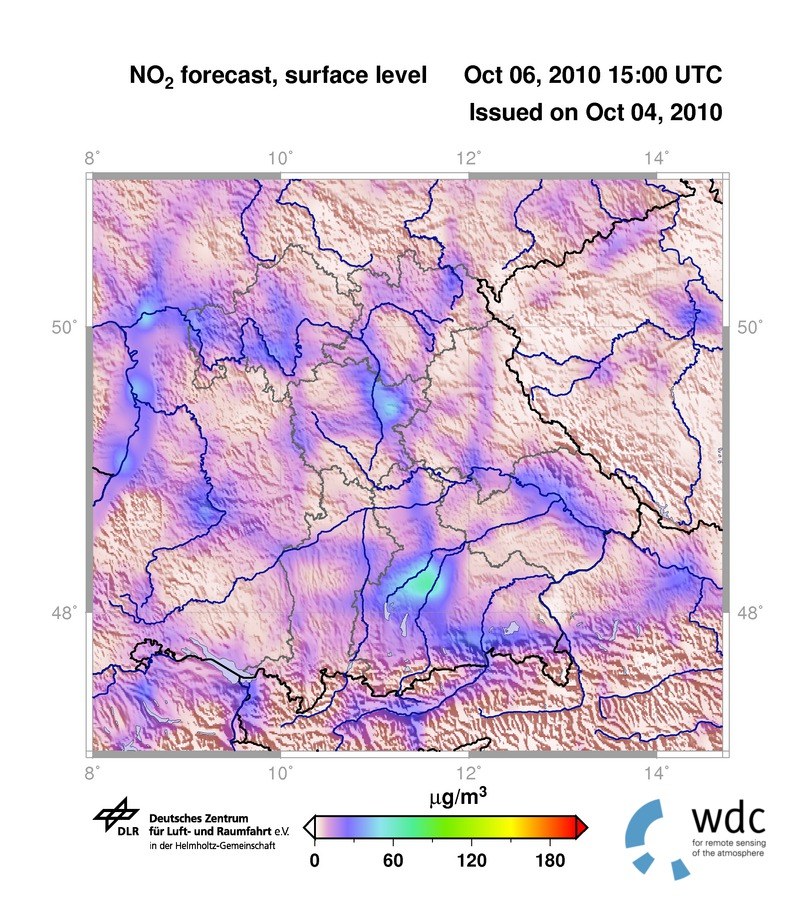Modeling Air Quality

Die The quality of inhaled air plays a large role in the health of the population. One possibility for determining the spatial and temporal distribution of relevant pollutants is by systematically measuring them.
But such measurements are only representative of a very small area in the momentary direction of the air flow approaching the recording station. Mathematical models are essential for determining the level of pollution for more extensive areas. These so-called Chemical Transport Models (CTM) take into account the strength of anthropogenic and biogenic emissions, their diffusion in the atmosphere, the transport of air masses, and the chemical interactions of all the substances being observed. With the help of CTM it is possible to generate a wide-area forecast of pollutant load. The figure on the right shows a forecast of ground-level NO2 in Bavaria on October 6, 2010 at 3 pm local time. Increased NO2 concentrations can be noted for conurbations and major traffic routes.
A precondition for forecasting air quality is knowing the meteorological situation. A weather forecast for the ensuing three days is produced daily by DFD’s Atmosphere department with the help of the Weather Research and Forecast (WRF) model.
Both the weather forecast and a prediction about air quality are routinely validated by measurements. The figure below compares the NO2 concentrations predicted by the CTM with the amounts measured at all Munich stations for the time period October 1-10, 2010. The measuring stations used for this comparison are in some cases located near places with heavy traffic (in order to record the worst peak load of pollution); in other cases they are more representative of overall levels of urban background pollution. The sum of the measurement data is shown by the blue areas, and the model is reflected in the red line, which is more an indication of urban background pollution.
In order to improve a forecast it is necessary to know the actual state of the atmosphere as precisely as possible. Therefore at DFD’s Atmosphere department work is currently being undertaken to assimilate satellite-based air quality measurements in existing air quality models.
The products generated by the DFD’s Atmosphere department are being used in the following ongoing and planned projects: Munich University (LMU)-DLR joint project “Bavarian Weather and Health” (“Bayerisches Gesundheitswetter”), and two projects for the GMES Downstream Air Quality Service: the DLR-led PASODOBLE project of the EU Seventh Framework Program and the GAF-DLR-T-Systems joint project “obsAIRve.”

